Best mini pedals 2025: Give your ‘board some breathing room with these small-scale stompboxes
Our choice of mini guitar pedals for phenomenal cosmic tones, with an itty bitty pedalboard footprint
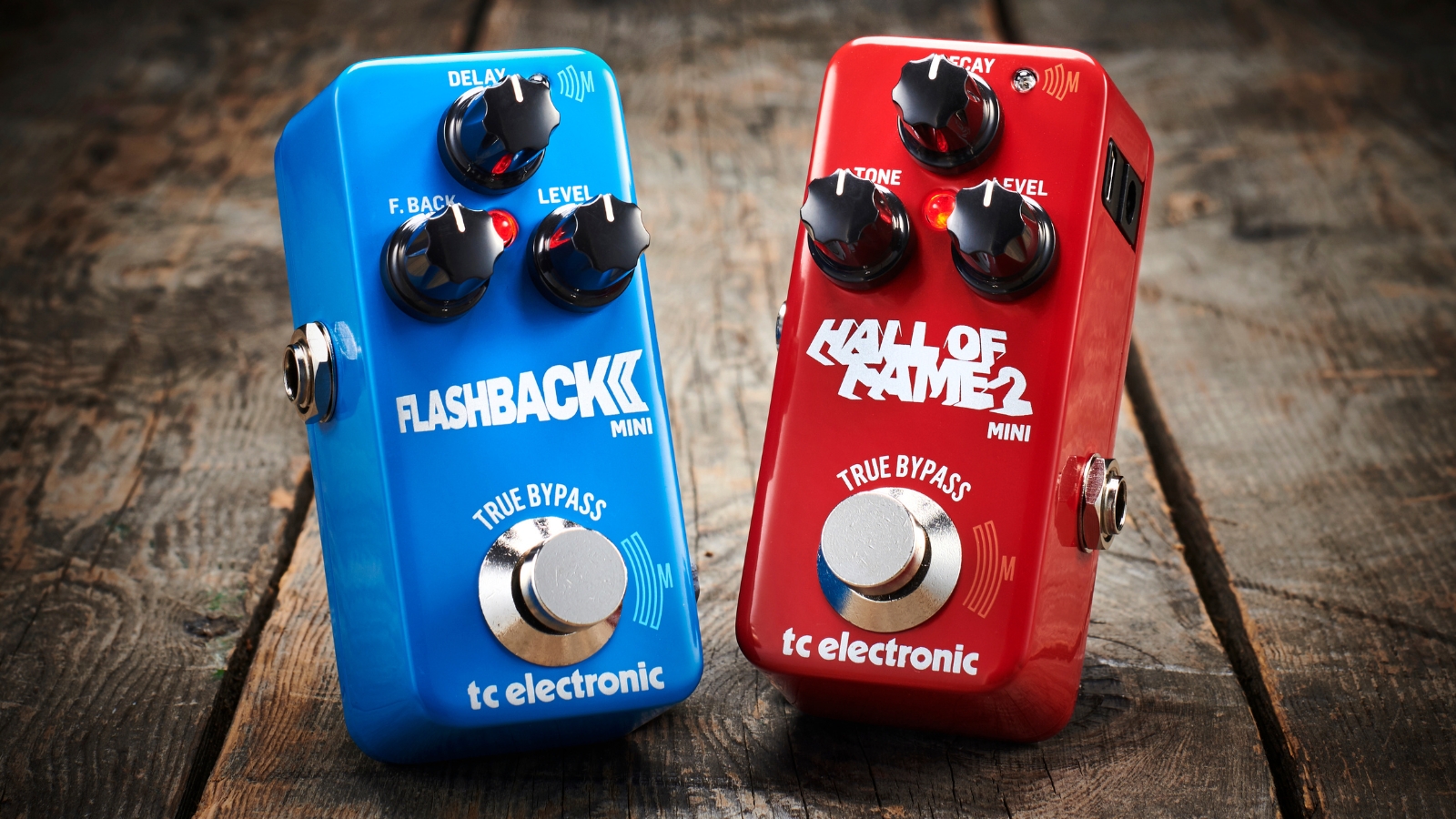
If you’ve got a pedalboard full to bursting with stompboxes but still need more, then you need to look at the best mini pedals. These micro noise makers let you add even more variety to your sound, without sacrificing anything to the pedalboard real estate gods. Just because they’re small doesn’t mean you're scrimping on quality either, these are all top-quality effects from major manufacturers.
We’ve all encountered that problematic game of Tetris when trying to get all your pedals to fit on one pedalboard. If it isn’t running out of power points or that patch cable that infuriatingly doesn’t quite reach where you need it to, one of the absolute worst feelings is having to sacrifice a pedal to make way for another. Yeah okay, you only use it on that one song, for that one section but still, it just doesn’t hit the same without it.
Enter the best mini guitar pedals to save the day. Instead of downsizing your ‘board, or forking out for a larger one, a mini pedal can help you expand your tonal palette without losing any of your hard-fought tones. You could even put together a whole new pedalboard of mini pedals, making you the envy of other guitarists come load-in time.
If you’re new to the mini pedal world, then be sure to check out our buying advice section at the end of the article, otherwise, keep scrolling to see some monster tones in mini enclosures.
Best mini pedals: Our top picks
There’s no real ‘best’ pedal here as such, instead, we’ve gone for a list of pedals that each do a different job, just in a much smaller format than usual. But if we're speaking in terms of pure value for money, it’s hard to beat the Ibanez Tube Screamer Mini. Pretty much every player has an overdrive on their pedalboard, and this one is a stone-cold classic, now even smaller for your convenience.
It doesn’t make any fancy noises, but there’s no doubt the Xotic SP Compressor will massively improve your tone. Considering the size and simple controls, there are a lot of different sound options available with this brilliant mini stompbox - you can even use it as a boost pedal.
Finally, we’ve picked out the MXR Carbon Copy Mini which gives you pure vintage delay tones in a thoroughly modern compact stompbox. It’s got adjustable modulation, internal trim pots for deeper sound editing, and most importantly, great delay sounds.
Best mini pedals: Product guide

Specifications
Reasons to buy
Reasons to avoid
It’s one of the legendary overdrive pedals and now you can get that huge, searing, TS-tone in a much smaller package. The Ibanez Tube Screamer Mini took the music world by storm when it launched in 2015, thanks to its awesome sound and tiny footprint.
Like the original, it maintains total tonal transparency, delivering that midrange punch just as well as its larger sibling. We could tell no difference between it and a regular TS909, and smashing it into the front of a tube amp delivers some delicious results.
You get one full-size knob to control the drive, which is a nice touch as the other two are positively tiny. If you’ve got sausage fingers you might struggle a bit with fine-tuning them, but this kind of pedal tends to be a set-it-and-forget-it.
Read the full Ibanez Tube Screamer Mini review
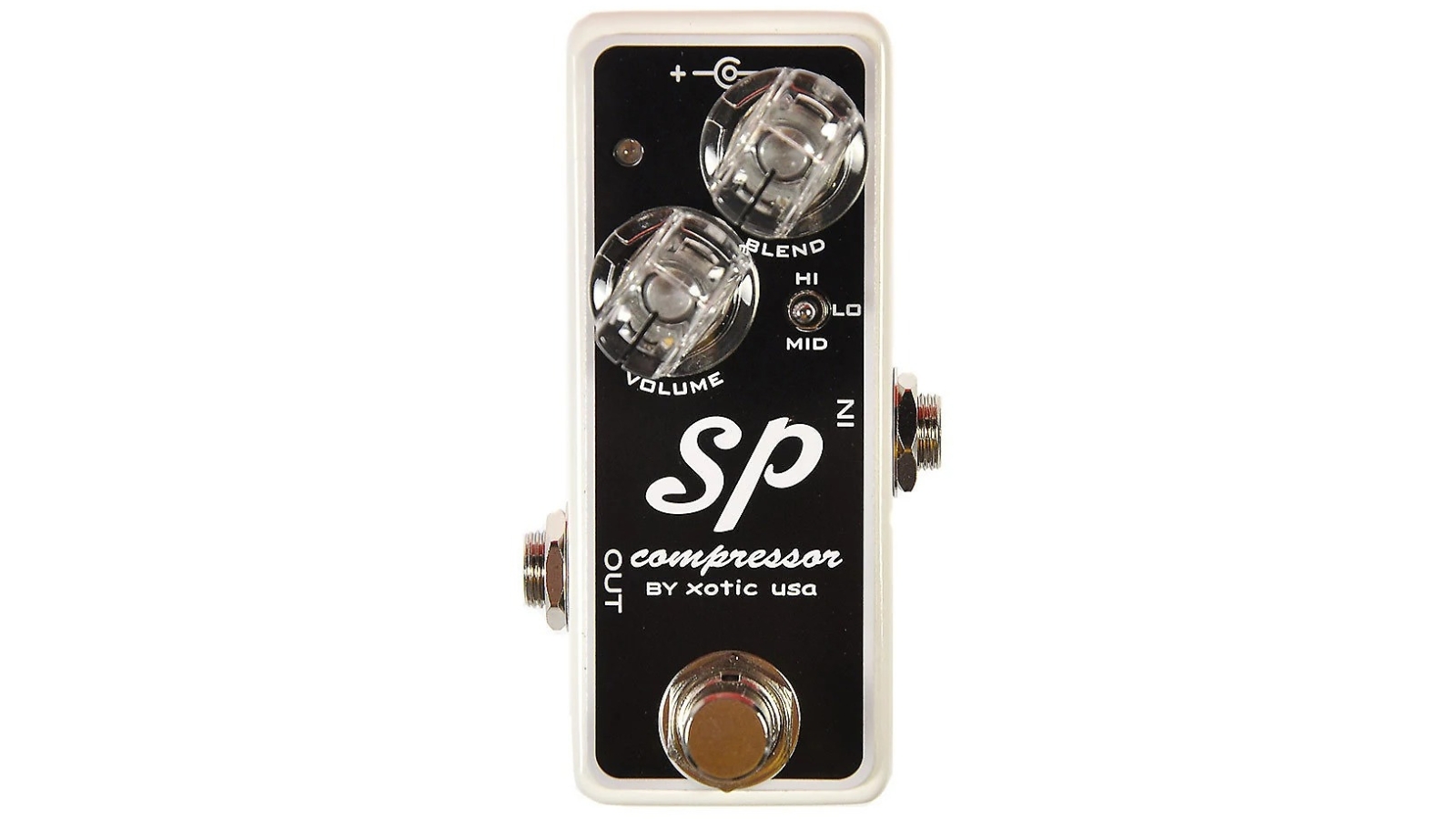
Specifications
Reasons to buy
Reasons to avoid
This tiny stompbox is a surefire way to better guitar tone, squeezing your sound without you having to push another pedal off your ‘board. The Xotic SP Compressor isn’t a regular pedal in mini-form either, it was always designed to be this small.
A three-way switch gives you different amounts of compression and if you’re looking to fine-tune it, there are internal DIP switches that let you adjust the attack and release options. There are also extra controls for padding the incoming tone to deal with high-output humbuckers, as well as a hi-cut filter.
It’s not all internal though, the volume knob gives you the option for a healthy +15dB boost, meaning you can use it just to boost your guitar tone. Alongside the blend knob, you can mix your compressed signal in with your dry sound, making this an incredibly versatile compressor considering the size.
Read the full Xotic SP Compressor review
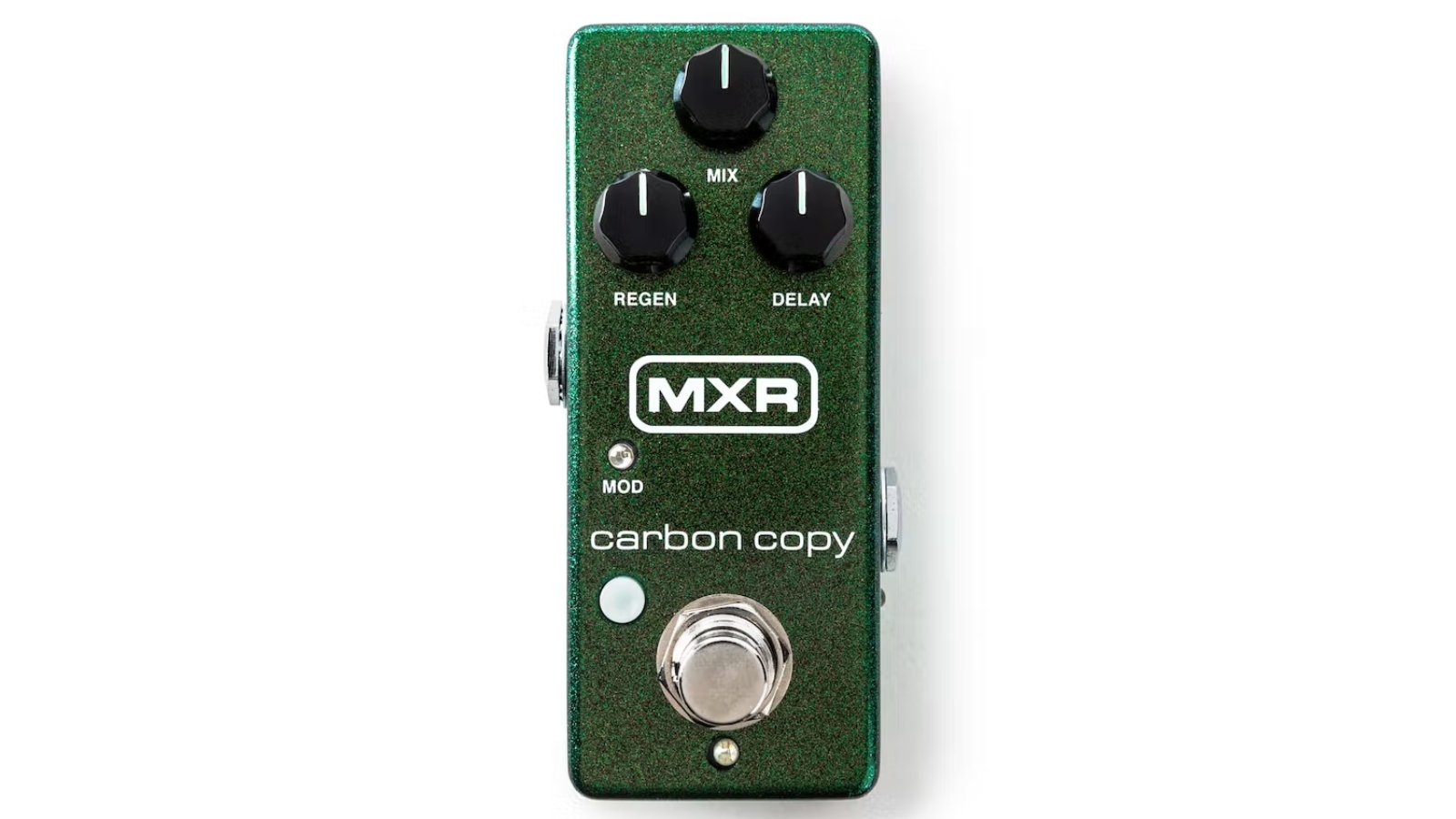
3. MXR Carbon Copy Mini
Our expert review:
Specifications
Reasons to buy
Reasons to avoid
Pretty much identical to its larger sibling, the MXR Carbon Copy Mini gives you those warm washes of delay in a much smaller enclosure. With an all-analog signal path and bucket brigade delay circuit, this is a great delay pedal for vintage tones on a busy ‘board.
This mini version does have an advantage over the larger version in the side-mounted bright switch, giving you a more defined echo sound and adding another voice to your tonal arsenal. Its traditional voice is unchanged from the original, giving a darker, warmer tone that underpins your playing brilliantly.
Engage the mod switch for some syrupy chorus effect on your delay tails, which can be fine-tuned using the internal trim pots that adjust the speed and width. You’ll need to accommodate for the the tighter taper of the pots when making fine adjustments, but the space it saves on your ‘board is totally worth it.
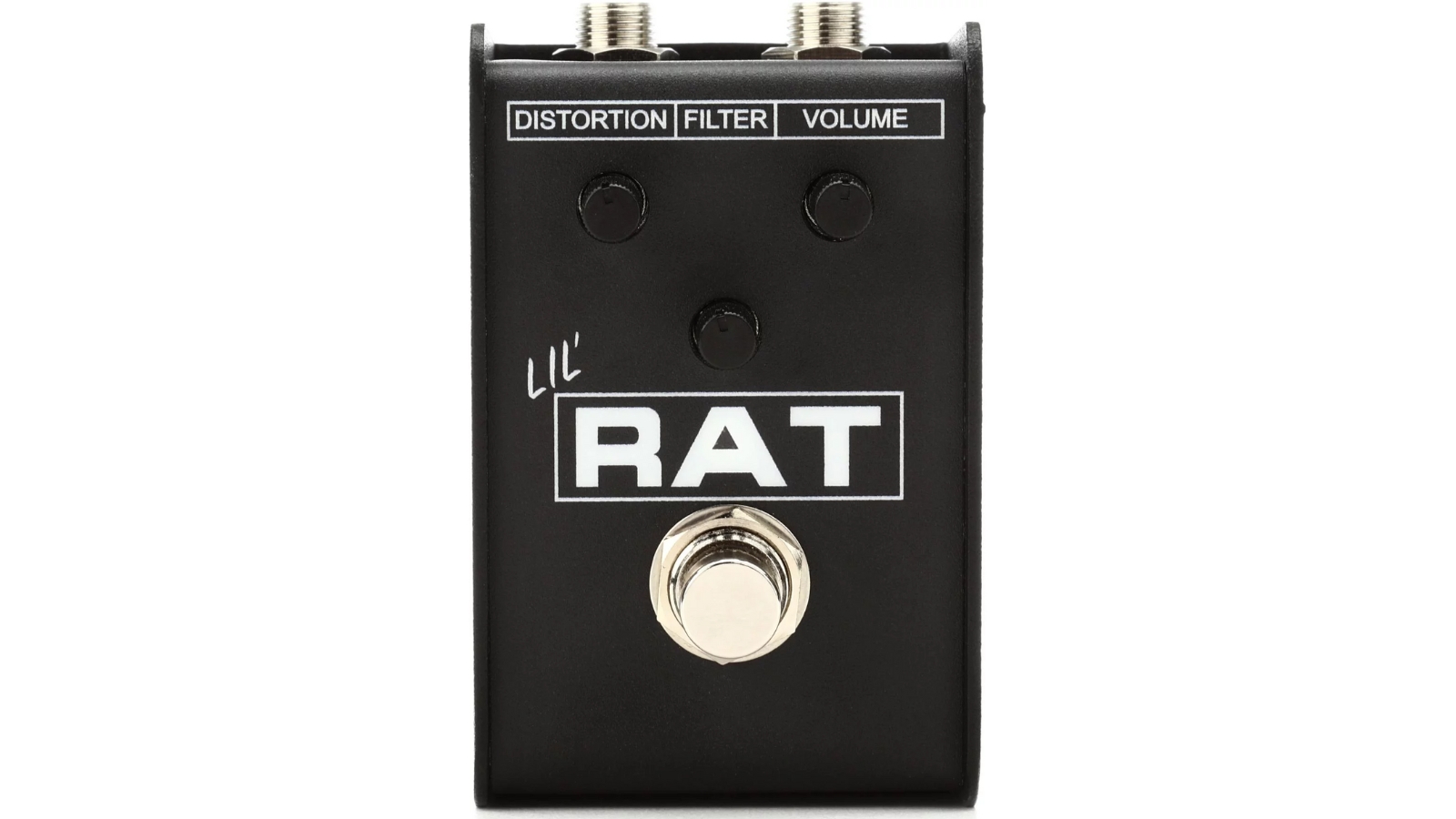
Specifications
Reasons to buy
Reasons to avoid
This legendary distortion pedal is now able to fit on the busiest of pedalboards thanks to some serious downsizing. The ProCo Lil’ Rat packs a Rat 2 circuit into a tiny enclosure, which means some miniscule knobs, but all the same great sound.
If you’ve used a Rat before you’ll know what you’re getting here. It’s a versatile distortion pedal that goes from a nice touch of overdrive to full-on, nasty fuzz distortion. Part of the reason the Rat is so lauded is that it can be used forabsolutely mental guitar tones as well as just being used to add a touch of subtle color to your sound.
The simple control set makes it easy to dial in your preferred brand of distortion, with the tri of distortion, filter, and volume allowing you to easily manipulate the pedal. The filter knob works similar to a hi-cut, at one end giving you loads of cut, and at the other allowing you to tame treble-heavy pickups.
Read the full Pro Co Lil’ Rat review
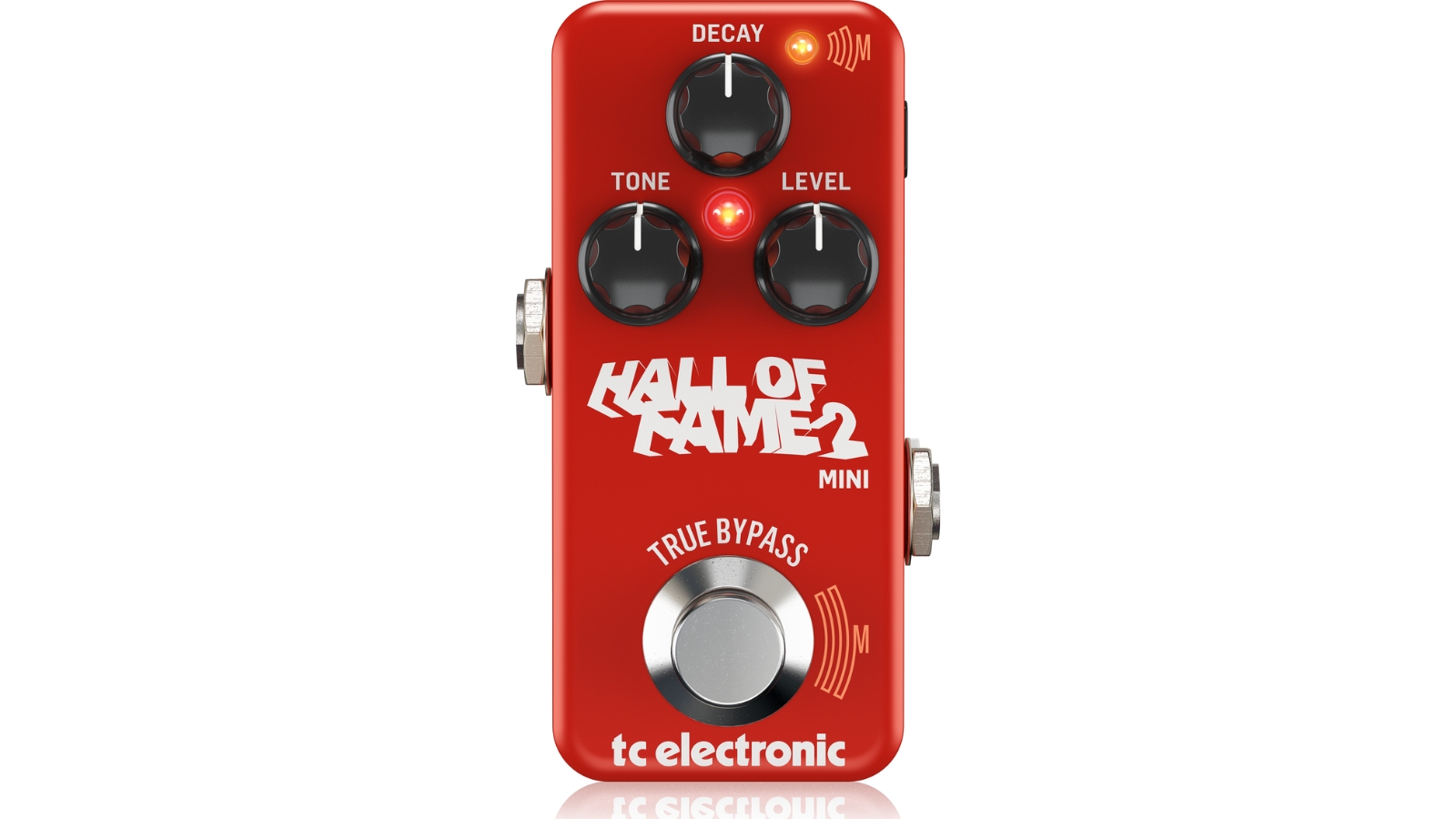
5. TC Electronic Hall of Fame 2 Mini
Our expert review:
Specifications
Reasons to buy
Reasons to avoid
The TC Electronic Hall of Fame 2 Mini sees one of the most popular reverb pedals get a mini-enclosure so it will fit on anybody’s pedalboard. This updated version sees a couple of extra knobs added for versatility, as well as the addition of a MASH footswitch.
You can get all the same great tones from the full-size pedal, although you’ll have to be willing to use the smartphone app to get them. This means a wealth of amazing reverb sounds in a tiny enclosure, with everything from your classic warm room to the cold wash of a hall reverb and beyond.
When you connect the Hall of Fame 2 Mini to a computer, you can customize your own sound using loads of different parameters, then beam it back to the pedal for use on stage or at your next rehearsal. Whilst it won’t suit players who like to tweak a lot, as a set-and-forget reverb pedal that doesn’t take up too much space, it’s hard to do better than this little red box of tricks.
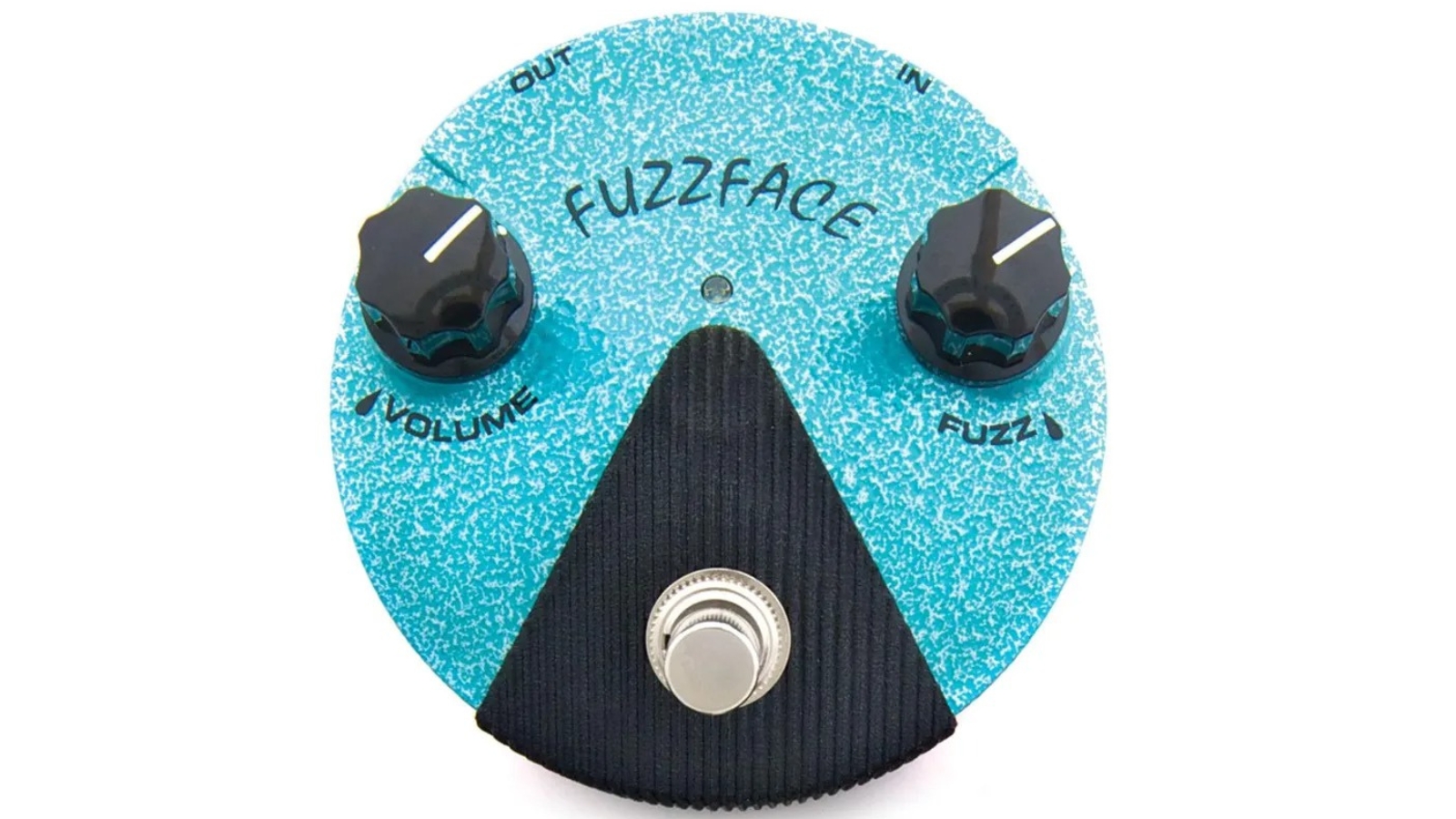
Specifications
Reasons to buy
Reasons to avoid
Nearly every guitarist who’s owned one has bemoaned the circular shape of the Fuzz Face. Such an iconic tone, yet so incredibly difficult to fit on any pedalboard. With the Dunlop Jimi Hendrix Fuzz Face Mini, that much-loved fuzz tone will now fit on even the busiest pedalboard.
The circuit is exactly the same as its full-sized cousin, so you get all that great Fuzz Face tone you’d expect. The mid-range cuts through a full band fantastically, and it properly sings when you put it in front of a cranked tube amp. Switch to your neck pickup and you can access some of those awe-inspiring octave overtones.
It’s got an easy-access battery door if you’re the kind of player who prefers their fuzz on battery life, and the enclosure feels incredibly well built, more than sturdy enough to put with regular stomping. As far as mini-fuzz pedals go, this little blue beast is hard to beat.
Read the full Dunlop Jimi Hendrix Fuzz Face Mini FFM3 review

7. Korg Pitchblack X Mini Tuner
Our expert review:
Specifications
Reasons to buy
Reasons to avoid
Okay so buying a tuner isn’t really the first thing on a guitarists list when looking to purchase a new pedal, but the Korg Pitchblack X Mini tuner is a great way to create more room on your ‘board without sacrificing the functionality of another pedal.
Your tuner doesn’t need any controls, other than the footswitch to engage it, so it makes sense that it should be your first port of call when looking to free up that valuable pedalboard real estate. Korg’s Pitchblack tuners have been on touring guitar players' rigs for years and years now, offering reliable tuning and rock solid durability.
The display is incredibly bright, although not as contrasting as the full-size version. You also get three different display modes to suit your tuning style. There are actually more color segments on the mini version than on the full-sized one, which goes a long way to alleviating the accuracy needed when tuning on stage.
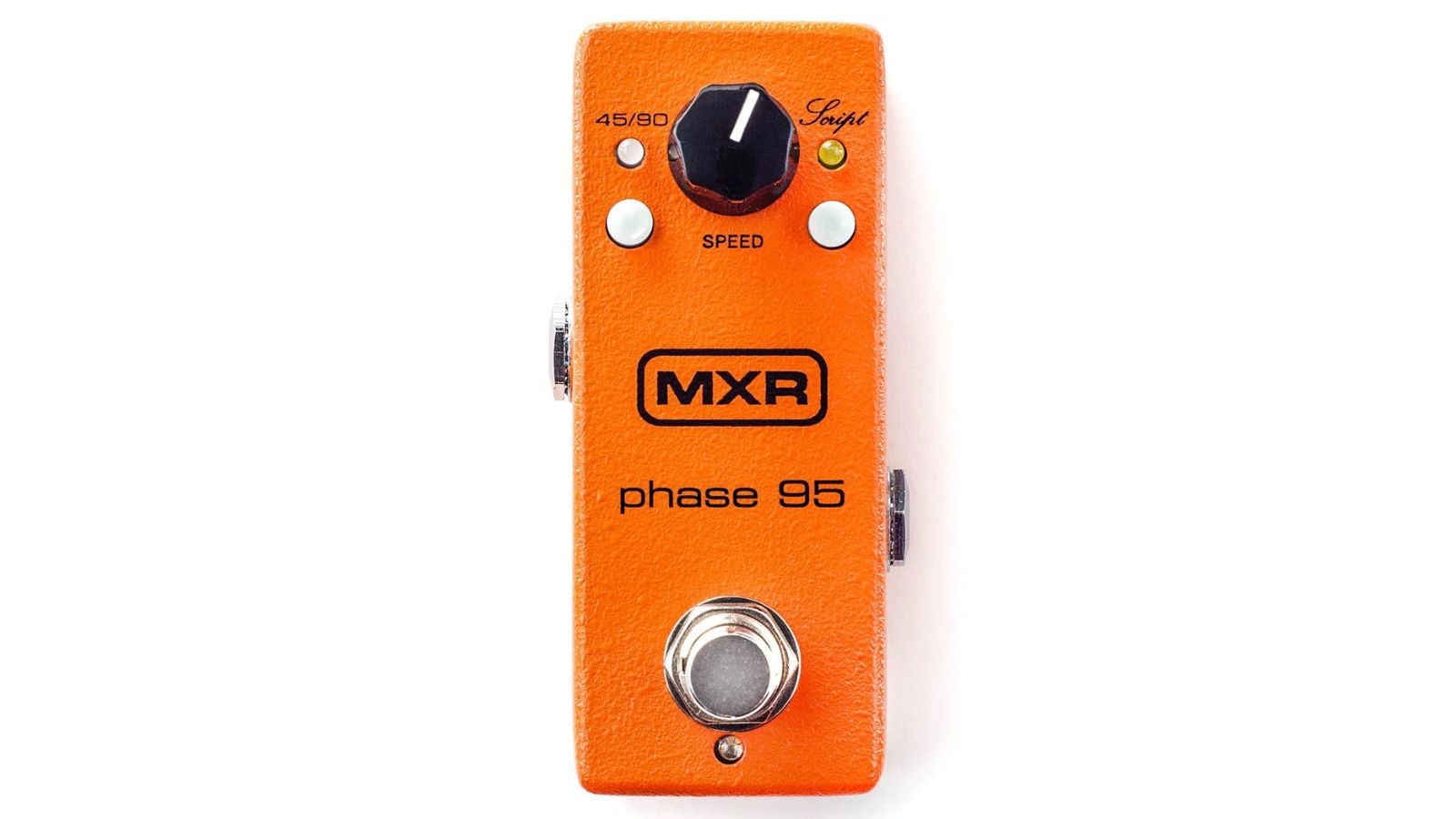
8. MXR Phase 95
Our expert review:
Specifications
Reasons to buy
Reasons to avoid
Another classic pedal that’s been shrunk down, ironically the MXR Phase 95 Mini actually has more controls than the full-size Phase 90. Encompassing four phase circuits in one miniature pedal, this small stompbox offers a powerful range of tones.
On the left-hand side, you have a switch that lets you change whether you want the two-stage Phase 45 sound, or the classic four-stage Phase 90 type tone à la Eddie Van Halen. To the right of the speed knob is a switch for the vintage ‘Script’ mode or a more modern-sounding circuit.
With these four tones, you can cover pretty much any phase type from classic to modern. Phase 45 is more uni-vibe-esque, lush, warm, and mellow. On the Phase 90 circuit, you can hear a deep and wide phase sound, which intensifies the more you crank the speed knob. An incredible value-for-money mini stompbox.
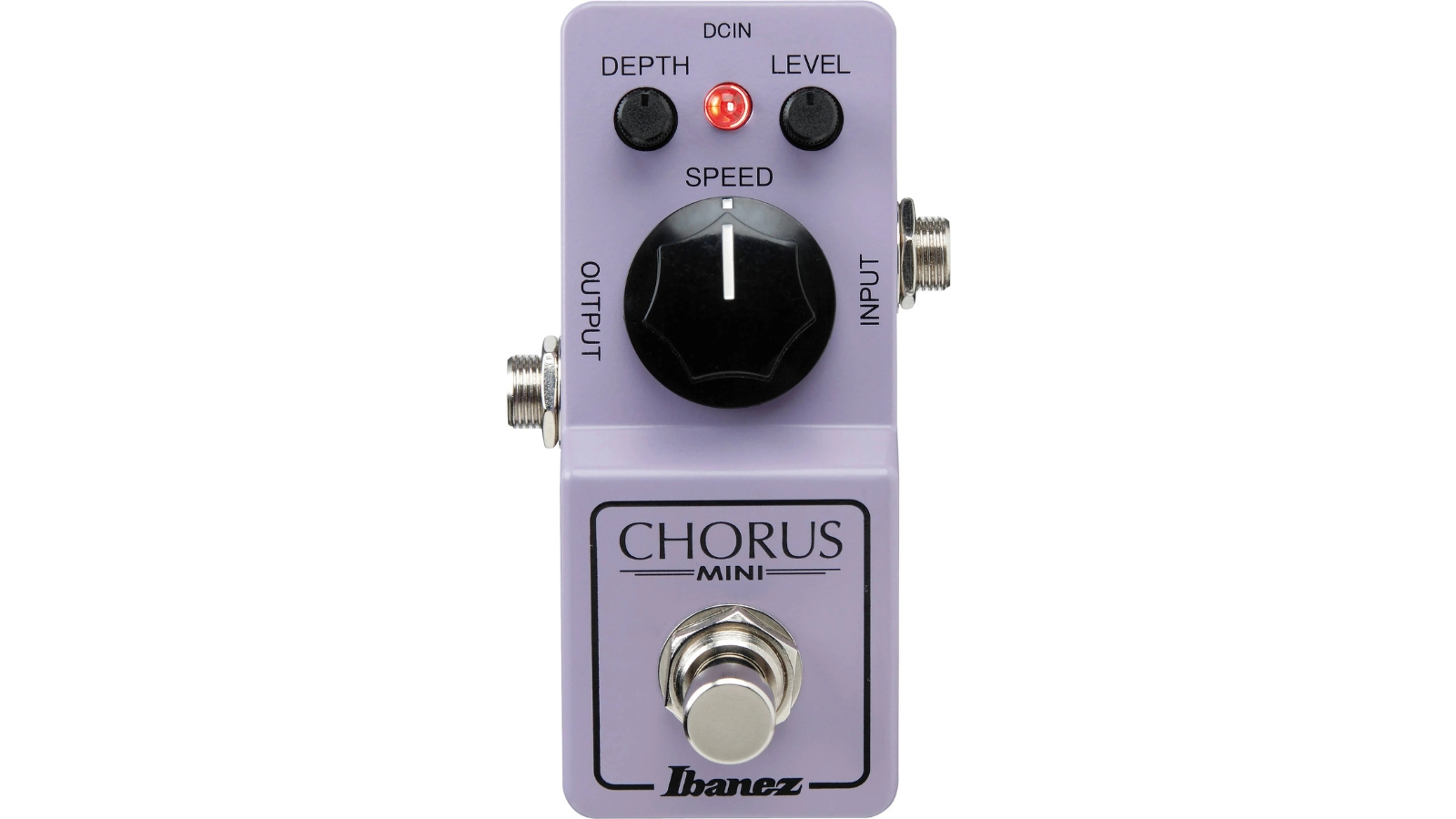
Specifications
Reasons to buy
Reasons to avoid
There aren’t millions of mini chorus pedals out there, but the Ibanez Chorus Mini is undoubtedly one of the best of the bunch. There are loads of great tones in this little pedal, with three different controls to dial in a range of sounds.
Eschewing emulating the classic CE-1 type chorus, this offering opts to emulate Ibanez’s own CS9, giving you a thick, syrupy chorus sound. Think Prince or Metallica and you’ll be in the ballpark of this pedal, it’s super sweet-sounding.
It can get a little noisy when dealing with high gain, but it’s certainly not a deal breaker. The controls all feel rock solid too, even the tiny knobs for depth and level, with everything tracking well. A great pedal for adding classic chorus tones to a busy ‘board.
Read the full Ibanez Chorus Mini review
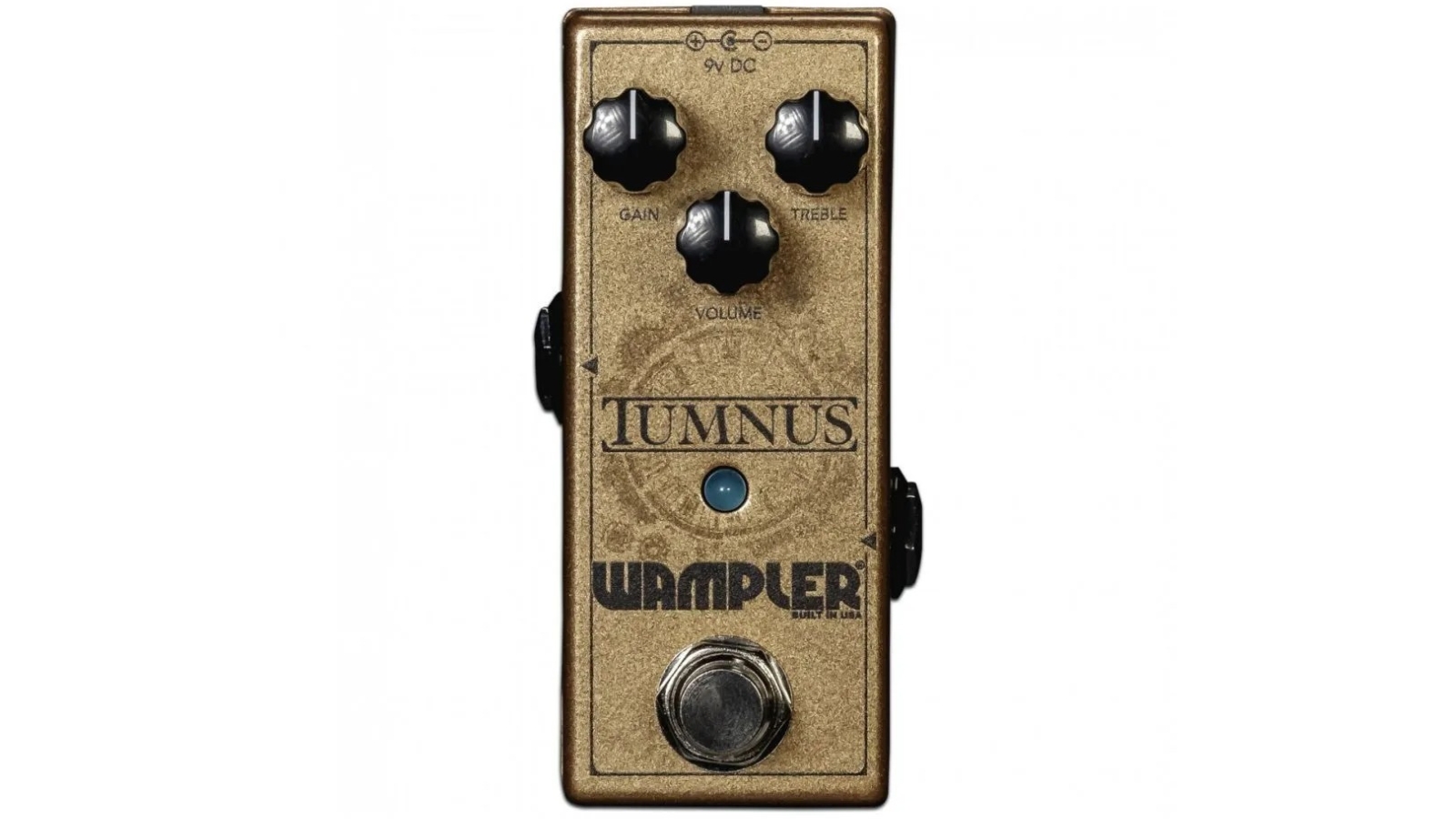
10. Wampler Tumnus Overdrive
Our expert review:
Specifications
Reasons to buy
Reasons to avoid
We’ll avoid entering the debate about the world’s most overpriced pedal, but there’s no doubting that a great Klon clone has a place on pretty much any guitarist's pedalboard. The Wampler Tumnus Overdrive gives you that iconic Klon tone with a tiny footprint.
For low to medium overdrive it’s hard to do much better than a good Klon clone, and the Wampler Tumnus is a very good one. There’s a subtle hint of compression, plenty of rich midrange, and that hallowed touch response that reacts to your pick attack.
Like its inspiration, the Tumnus features a worn, gold enclosure and the same three controls you’ll find on the real deal. The tiny size is a complete game-changer however, as the original Klon takes up a lot of space on your pedalboard. The enclosure feels incredibly sturdy and will put up with plenty of onstage abuse.
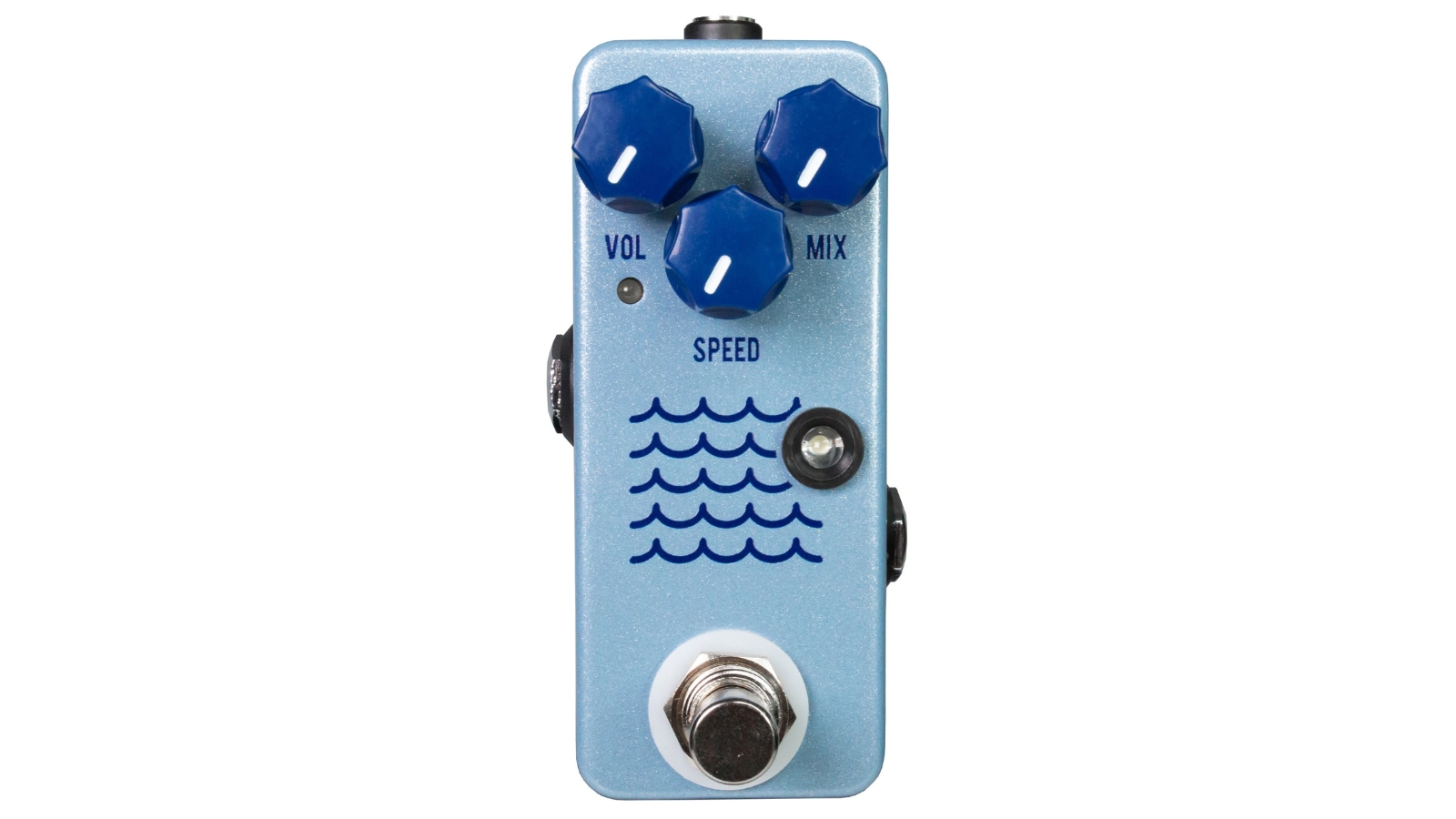
11. JHS Pedals Tidewater Tremolo
Our expert review:
Specifications
Reasons to buy
Reasons to avoid
If you’re looking for an amp-esque tremolo effect without having to lug a heavy tube 2x12 around with you, then JHS Pedals Tidewater Tremolo will definitely fit the bill. It’s got a lovely range of tones that go from subtle trem right through to hard square wave sounds.
It won’t quite do that helicopter-esque chop that some pedals do, but it excels in subtle trem sounds that add a silky shimmer to your tone. It sounds very much like the tremolo effects you’d find on a Fender Princeton or Vox AC30, and there’s plenty of scope for dialing in a range of other tones too.
You can use it as a clean boost, although it does get a little noisy at higher settings in complicated setups. The mix control is really handy for getting just the right amount of level in your tone, and the super bright, white LED means you’ll never doubt whether it’s on or not.
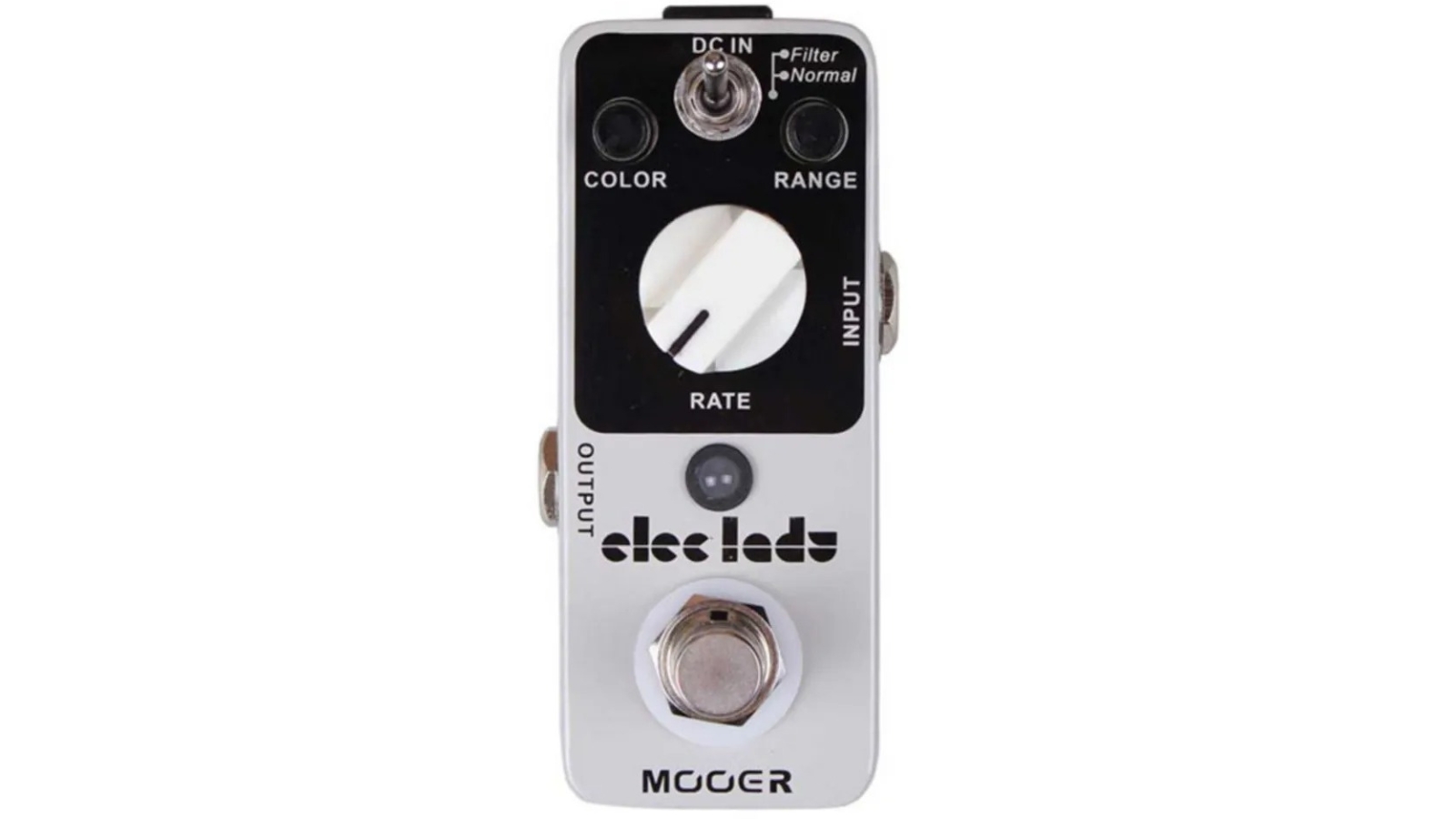
Specifications
Reasons to buy
Reasons to avoid
Inspired by the legendary EHX Electric Mistress, the Mooer E-Lady delivers classic flanger tones in a mini stompbox format. All the controls mirror those of that iconic pedal, letting you add some woosh and swoosh to your sound.
If you’ve ever used an Electric Mistress then you’ll know what you’re in for here, it’s an analog, organic flanger sound that’s warm and articulate. It never sounds thin or tinny, and whilst you lose some of the upper highs (a feature on most flanger pedals) this is without a doubt one of the best-sounding mini-flanger pedals we’ve ever tried.
Running at 9V, there is some volume drop, but this can be remedied by running it at 12V instead. For the money, you’ll be hard-pressed to find a flanger pedal that sounds as good as this one, and it has the benefit of being easy to fit onto a busy ‘board.
Read the full Mooer ElecLady review
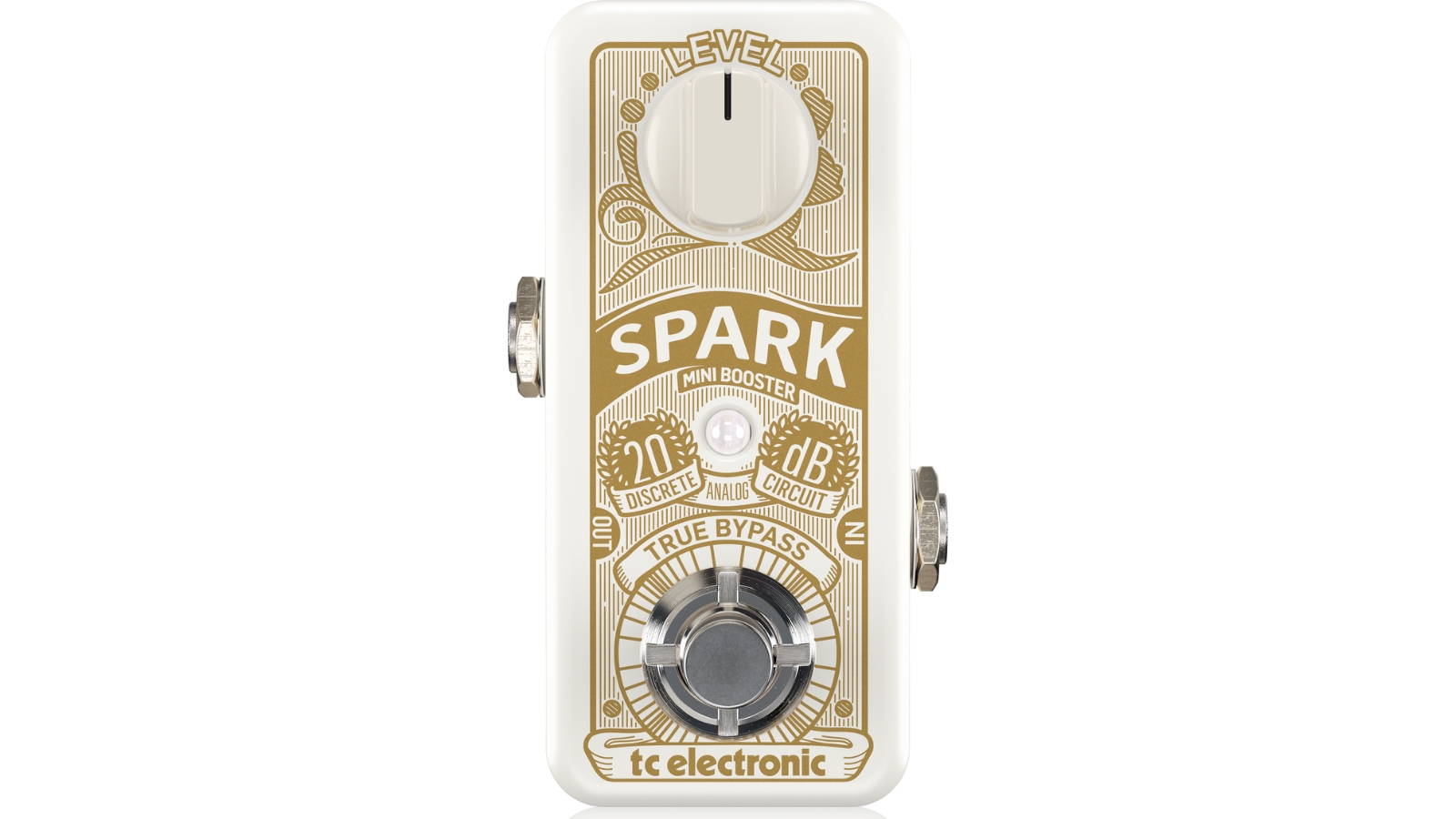
Specifications
Reasons to buy
Reasons to avoid
The TC Electronic Spark Mini Booster is a great way to add some clean gain to your pedalboard without sacrificing too much space. It’s tonally transparent, so won’t color your hard-fought sound.
It’s great for pushing your amp into overdrive earlier or just serving to lift your tone for certain sections of a composition. If you’ve got an already driven amp and want to add a bit more gain on demand, it works fantastically well for that use case too.
While players may miss the bass and treble controls of the full-size Spark, one feature unique to this pedal is the PrimeTime switching. Serving a dual function as both a momentary and latching switch, you can hold the footswitch down so the boost only lasts for the amount of time your foot stays on the pedal, or just use it as a classic on/off type.
Read the full TC Electronic Spark Mini Booster review
Best mini guitar pedals: Buying advice
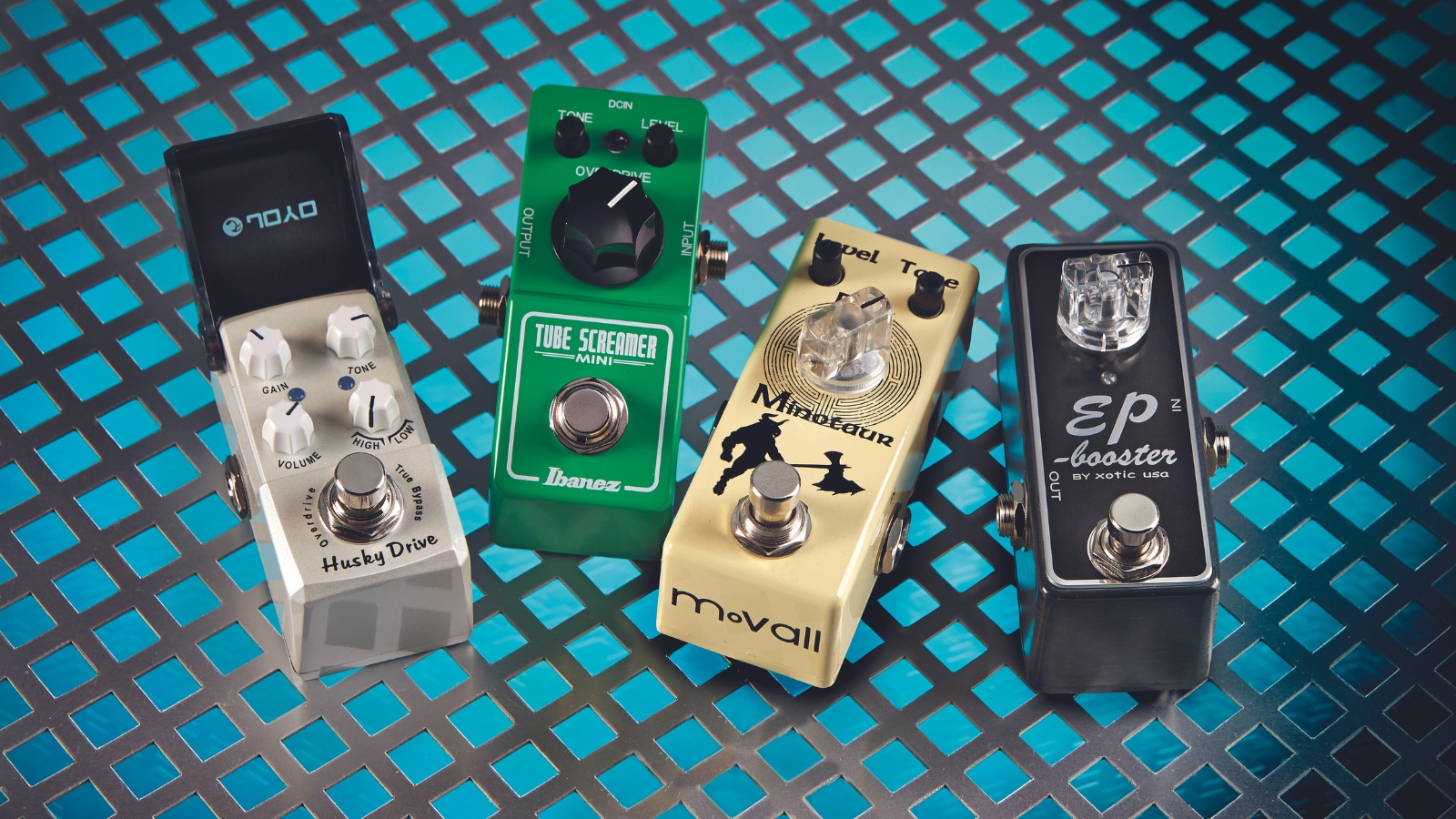
If you’re buying some mini guitar pedals for the first time, then you’ll want to peruse our buying advice section to make sure you’re armed with the correct knowledge. There are some differences between the regular size and mini stompboxes, so it’s well worth knowing the difference before you purchase.
What's the difference between a mini pedal and a full size pedal?
Typically the main difference between mini guitar pedals and full-size guitar pedals is the access to functionality. Mini guitar pedals don’t have as much physical space as their full-sized brethren, and thus you’re not as likely to find the same number of controls on their enclosures.
Some pedals get around this by placing DIP switches or trim pots inside the pedal, which means you have to open it up to adjust some settings. This is true of some full-size pedals too, but it’s a rarity rather than the standard. If you’re going for a set-and-forget type effect usage then having to do this probably won’t bother you too much, but if you’re the sort of player who enjoys tweaking on the fly then a mini-pedal is perhaps not the right choice for you.
Others, like those from TC Electronic, use a smartphone app where you change your settings, then beam them to the pedal. This is great if you’re tech-savvy but a lot of players can find this frustrating because you keep having to go back and forth to find the right sound.
Apart from the functionality benefits, there’s little else to separate a full-size pedal from its miniature equivalent. In fact, a lot of guitarists bemoan the fact the companies don’t make smaller form pedals, as they’re typically cheaper, and of course, they have the benefit of taking up less space, which means more pedals!
Do mini-guitar pedals affect my tone?
Mini guitar pedals work exactly the same as their bigger siblings, they just use smaller components to keep the footprint small. A mini-pedal will have the exact same effect on your tone as the larger version, and in our experiments, we’ve yet to find a mini-pedal that sounds any different from the full-size version.
Can I make a mini guitar pedalboard?
Absolutely. Many guitarists utilize a mini-pedalboard for traveling or home use, as it allows you to emulate your full-size rig without taking up as much room. Some guitarists like to have a separate mini-pedalboard they can practice or record at home with, as it offers a lot of benefits in terms of usability without having to compromise on tone.
Are there any cheap mini-guitar pedals?
There are actually loads of cheap, imported mini guitar pedals available on sites like Amazon. We’ve played quite a few of these and they are of varying quality. Some are absolutely incredible, like the Mooer E-Lady, whereas others failed to make much of an impression on us. If you’re looking for mini-pedals on a budget, then we’d recommend you read some reviews first before purchasing, just to make sure you know what you're letting yourself in for.
Related buyer's guides
MusicRadar's got your back
- The best distortion pedals for every budget
- The best looper pedals you can buy right now
- The best guitar plugins to supercharge your guitar recordings
- Take a look at some of the best gifts for guitarists
- The best pedalboard power supplies
- On a tight budget? Here are the best cheap guitar pedals
Get the MusicRadar Newsletter
Want all the hottest music and gear news, reviews, deals, features and more, direct to your inbox? Sign up here.

Matt is a Junior Deals Writer here at MusicRadar. He regularly tests and reviews music gear with a focus on audio interfaces, studio headphones, studio monitors, and pretty much anything else home recording-related. Matt worked in music retail for 5 years at Dawsons Music and Northwest Guitars and has written for various music sites including Guitar World, Guitar Player, Guitar.com, Ultimate Guitar, and Thomann’s t.blog. A regularly gigging guitarist with over 20 years of experience playing live and producing bands, he's currently studying Sound Engineering and Music Production at Spirit Studios in the UK.
“Not another multi-effect for your dentist,” but Polyend’s Mess looks like an FX sequencing powerhouse that you can really get your teeth into
“We were able to up the gain and the volume on tap way past the levels we would normally get”: ThorpyFX’s Hanami fuzz pedal is packing NOS germanium, dynamic, and blooming lovely